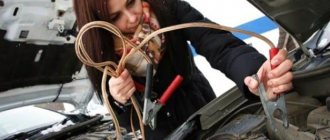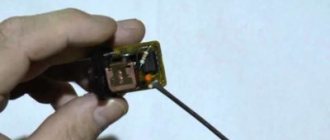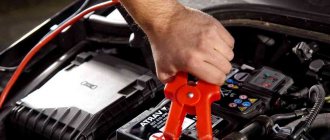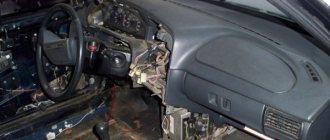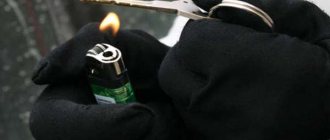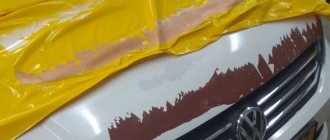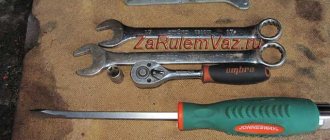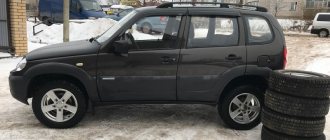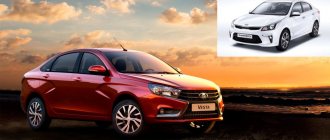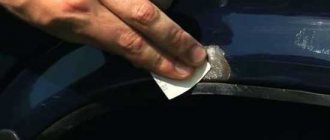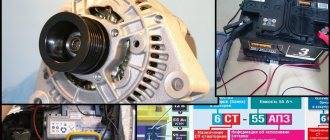Guys, we put our soul into the site. Thank you for revealing this beauty. Thanks for the inspiration and goosebumps. Join us on Facebook
and
VKontakte
Even those who have not been driving for the first time do not always know about the subtleties and nuances that make driving life easier.
website
tells how to feel at ease on the road, learn to avoid dangerous situations and become a confident driver.
Check if the mirrors are adjusted correctly
If the mirrors are not adjusted correctly, then there is a blind spot - a part of the road that you cannot see, so you may not notice the car in the next lane. To avoid it, adjust the side mirrors so that your car is not visible in them
(or it was visible just a little).
To check for a blind spot, slowly reverse past another parked car while looking in your side mirror. Once she has disappeared from the mirror, you should be able to see her in your peripheral vision. The rear view mirror is adjusted so that the rear window of the car is fully visible
. When adjusting your mirrors, take the position in which you usually drive your car.
Learn to feel where the wheels are
To be able to avoid potholes on the road and not scratch your rims when parking at the curb, you need to learn to feel where the car’s wheels are. To do this, take an empty plastic bottle, crush it with your foot and place it on the asphalt. Practice hitting it alternately with your right and left front wheels.
. Open the window to hear the crunch of the bottle.
Park using windows and mirrors as a guide
If you park facing a curb, stop as soon as you see the curb under your side mirror.
. This way the distance to the curb will be minimal, and you won’t scratch the bumper.
If you park parallel to the curb, you need to take care not to scratch the rims. Place a piece of colored tape at the bottom of the windshield. As soon as the curb line matches the mark, stop
. It is better to park parallel to the curb with your back - then the curb is visible in the side mirrors and you will not press close to it.
Dry your brakes after driving into a puddle.
before any puddle, even a small one , and then drive through it smoothly, without maneuvering, without picking up or slowing down.
.
At high speeds, water can enter the ignition system and the car will stall. In addition, hydroplaning
- when traction with the road disappears and the car slides through the water.
After leaving a large puddle, do not turn off the engine, do not brake, do not accelerate, and most importantly, dry the brakes: at low speed, press the brake pedal several times intermittently
. Friction causes the brake pads to heat up and the water evaporates.
Watch out for the maneuvers of tall cars ahead of you
On the road, watch not only the car in front of you, but also other cars in the traffic ahead. Watch out for tall vehicles (trucks, buses), their drivers have a better view of the road situation
. If they simultaneously begin to clear a certain lane, most likely there has been an accident or another obstacle, and you better change lanes in advance.
If the engine does not start, turn on the high beams
Sometimes in winter the engine does not start the first time. Warm up the battery before starting
— turn on the lights, radio or emergency lights for a minute.
Lower your rear view mirror at night
Not everyone knows that the standard rear view mirror in the cabin has 2 modes - day and night
. To prevent the headlights of a car driving behind from blinding you, pull the lever under the mirror down and change its tilt.
Turn on the air conditioner
Even if you don't use the air conditioner (for example, in winter), turn it on regularly for short periods of time
. Otherwise, the coolant will leak out and the tubes will dry out.
Use the handbrake regularly
Experienced motorists say that the driver should feel the dimensions of the car as if it were an extension of his body. This comparison is quite reasonable, since every car owner has to be in difficult situations that require an ideal sense of dimensions, for example, in a parking lot, when entering a garage, etc. The question arises, how can a beginner learn to feel the dimensions of a car so as not to create emergency situations on the road? To do this, experts have developed several exercises that help significantly improve driving skills.
A good sense of the vehicle's dimensions reduces the likelihood of getting into an emergency situation.
Beacons
The easiest way to get acquainted with the dimensions of a car is to use beacons. They are items that are safe for the car and do not cause damage to the body kit upon contact. Beacons for training the sense of size can be:
- Orange restriction cones;
- Plastic bottles with sand;
- Bags filled with soft packaging material;
- Old wheels.
The principle of the exercise is quite simple - you need to touch the beacon with the central part and its sides, and then with the rear bumper. It is very important to touch the object you have chosen, but not to knock it down. Practice shows that 10–20 attempts are usually successful, since here the accuracy of the touch depends not only on the sense of size, but also on the ability to control engine thrust at low speed.
Boundary cones are excellent as beacons.
When the driver completes the exercise without error, you need to move on to the next stage. From the beacons you should lay out the outlines of two cars located at a distance of 8–10 meters. To improve your sense of the car's dimensions, you need to try parking between them. This exercise will also prepare you for parallel parking, which is considered the most difficult type of entry into a parking space.
Subsequently, the beacons can be replaced with vertical stands made from large branches or plastic plant supports. Sticking them into a bottle filled with sand, install two posts at a distance greater than the width of your car by 1 meter. After driving through such an improvised gate, reduce the distance by 5–10 centimeters. Your goal is to achieve easy and fast passage through an opening that is only 10 centimeters wider than the car. A variation of the exercise for professionals is to try to do the same with folded mirrors, installing a “gate” along the width of the front wings.
Hitting
The exercise is also very simple, but requires good practice to accurately repeat the results achieved. An empty plastic bottle is placed flat on the platform. Your task is to hit such an object alternately with the left and right front wheel. The exercise may seem incredibly simple, but the sense of size often fails novice drivers, which causes them to miss.
When the exercise is performed flawlessly, it is worth complicating its conditions - hitting it at a higher speed. To consolidate the result, select a deserted section of the road and drive it at a speed of 60 km/h - this will require a very good sense of dimensions. However, it is not recommended to exceed the specified threshold - you may end up in a dangerous situation.
With due diligence, a beginner will quickly learn to feel the dimensions of a car.
In order to perfectly feel the dimensions of the car, you should move on to the third stage - you should hit the bottle while simultaneously making a turn. Even experienced drivers make mistakes in such an exercise; due to its complexity, it turns out to be the most effective. The plastic bottle can be replaced with another object, but it should be easily deformed, make a loud sound, but not fly out from under the wheel at high speed. A good substitute for such a beacon for training your sense of size is a cardboard box folded several times.
Practical exercises with parking sensors
This electronic assistant can teach you to feel the dimensions. To do this, simply when parking, you must control the position of the car, paying attention to its position on the parking sensors and its actual position in space. With thoughtful use, you can quickly learn how to park in reverse, and then do without additional devices.
- “Which is better: parking sensors or rear view camera”;
- “Which parking sensor to choose.”
Theory
.
There are a huge number of videos on the Internet devoted to ways to develop a sense of size. It is also useful to watch a video analyzing driver mistakes while driving. This will allow you to identify similar shortcomings in yourself and get rid of them in a timely manner. It’s a good idea to consult and ask for advice from experienced drivers. Conclusion
. The teaching in driving schools now is not very high quality. In essence, they train students to pass exams. But at the same time, they simply do not pay attention to the presence of many practical skills. Therefore, beginners often wonder how to learn to feel the dimensions of a car. You can master this skill yourself. To do this, it is necessary to allocate time for additional classes, including independent ones.
Tags
To better feel the dimensions of the vehicle, it is worth making marks on the base of the windshield. Take a large straight ruler and place it on the hood where the center of the front wheel is. Attach the other end. In the place that will be on the axis specified by the wheel, apply a mark inside - a line with a marker or a small sticker. Do the same with the second front wheel of the car.
Markers help you better feel the dimensions of the car and choose the right direction of movement in any situation. Their application will allow you to get rid of problems associated with passage in narrow places, for example, arches, gates and other architectural forms. The marks will also help you feel the dimensions of the car and the width of its track when driving on a bad road.
Parts of the car body can also serve as a guide, which will help a beginner to feel the dimensions of the car. Many novice drivers install deflectors on the hood, popularly called “fly swatters”, precisely so that they can see the leading edge of the car. Some cars are equipped with special bulges on the headlights, for example, Nissan Micra, Ford Fiesta and others. They are designed specifically to improve the driver’s sense of size. Mirrors can serve as side markers, which will make it very easy to navigate.
With the rear clearance, the situation is much more complicated - learning to feel it is very difficult. Drivers of hatchbacks can use the rear windshield wiper as a guide, but owners of sedans will have it much worse. The ideal option for getting a perfect sense of taillights is the above exercise with beacons - repeating it regularly, you will be able to achieve excellent maneuvering in any circumstances.
Fast learning
To develop a sense of the dimensions of a car, you should exercise at least 1–2 times a week during the first year of driving a car. Since the parameters of each vehicle are individual, classes should be repeated after purchasing a new car. In addition, there is always the option of undergoing vocational training at a specialized driving school. By enrolling in extreme driving courses, you will learn to feel the dimensions of the car in any situation, and also learn how to avoid the most dangerous situations on the road.
Buying a new car can be not only a pleasant event, but also a cause of stress. At first, it can be difficult to get used to the dimensions of your new vehicle, both for beginners and for experienced drivers.
It is especially difficult to get used to the dimensions of a car when changing the location of the steering wheel, however, even without this, replacing a car with small dimensions with a car with large ones can also cause a lot of trouble.
Where should you start?
First of all, in order to learn to feel the dimensions of our car, we need to correctly adjust the driver's seat. Remember, it should not be located too low, but on the contrary, to increase visibility and improve the feeling of the dimensions of your car, it must be slightly raised. We carefully adjust the mirrors, especially if you have changed from a right-hand drive car to a left-hand drive car or vice versa.
When adjusting the side mirrors, remember that road markings should also be visible through them. Don’t forget about the mirror located in the cabin; it can be adjusted taking into account the adjusted driver’s seat.
LEDs attached to the sides of the bumper will also be useful, since thanks to them it will be much easier for you to determine the dimensions of your car in the dark.
How to learn to feel a car after studying at a driving school
Experienced drivers feel the car as if they are one with it. Such instinct cannot be acquired as part of basic training at a driving school. Therefore, a newcomer is noticeable on the road even without a sign with an exclamation mark. Uncertain lane changes and low speed indicate an inexperienced driver.
At first, this behavior of a driving school graduate is quite understandable. However, the statistics of accidents involving beginners eloquently shows that there is no need to delay adaptation.
“Taming” a car consists of two components: driving skills and a sense of the car’s dimensions.
Control
In driving courses, just enough attention is paid to developing driving skills that will allow you to get to the exam and demonstrate to the traffic inspector that the student has an understanding of right-hand traffic and understands that running into pedestrians is not good.
The main problem for beginners is making friends with pedals. A stalled car is the best illustration of the inability to feel it. Only through hard training will you be able to find and feel the moment when you can release the clutch and slightly press the gas pedal.
Video - how to quickly learn to drive a car:
You should not expect that this skill will be practiced automatically as part of standard training at a driving school. Train on your own, but not in the yard (save the nerves of your neighbor car owners), but in empty parking lots or playgrounds.
Reversing is not for cowards. It is not difficult to master driving in reverse gear if you pay due attention to this exercise. Any driveway in the shape of a turn and a curb along the edge is suitable for this.
Focusing on the rearview mirror, try to move in reverse at a constant distance to the edge. Experienced instructors at driving courses effectively train future drivers in this way.
Video about the skills of driving a car with a manual transmission:
Coordinated manipulation of the gear shift lever and pedal control requires a separate topic for discussion. Fortunately, now for those who just can’t get comfortable with the pedals and lever, driving courses are available in licensed driving schools with an automatic transmission and the possibility of subsequently passing an exam.
Dimensions
Unfortunately, you won’t be able to feel the dimensions right away even with hard training. This takes time and appropriate driving conditions. If the way to work runs through narrow streets, then with regular driving, jewelry skills will appear in a couple of months.
Video - how you can train to feel the dimensions of your car:
The tense situation with parking, as, for example, in Moscow, also contributes to the filigree of the ride. This is where the best auto courses are, which will allow you to fully experience the dimensions and practice movement in all directions.
Video - training on the site:
It will be useful to learn to drive in those places where you will be driving most often in the future. Instructors, as a rule, meet students halfway. In addition, there are now a lot of private driving lessons; driving schools offer additional hours of practical training, which is worth taking advantage of if possible.
If there are difficult parking conditions in the yard, at first you can come up with a system of marks: where to turn the steering wheel, where to align the wheels, and where to stop to save the car’s bumper. The most effective driving courses are practice, so ride to your heart's content.
All driving school graduates should be well aware of prohibiting traffic signs, just like everyone else.
Novice drivers often have questions about turning left from tram tracks in the same direction.
About the rules for transporting children in a car https://voditeliauto.ru/poleznaya-informaciya/bezopasnost/pravila-perevozki-detej-v-avtomobile.html here and in Europe.
Video - how to feel the dimensions of a car:
May be of interest:
voditeliauto.ru
How to feel the dimensions of a car?
Don't be lazy to spend time on practical exercises. And you can practice in the following way: we take light boxes and build from them something similar to a gate, after which we try to drive through them. You need to devote several hours to this exercise, and if you cope with this task easily, we complicate it, that is, we reduce the distance between the boxes and increase the speed.
Approximately the same principle can be used - using boxes we designate the space into which we will need to move.
You can learn to feel the dimensions of your car in other ways. We draw a line on the asphalt, and then try to drive up close to it, but at the same time you should not touch it with your wheels.
And if you see that you cannot complete this exercise, then you can return to the task with boxes again. Also remember, this exercise will need to be performed until you learn to correctly determine the distance between your vehicle and such a stop line. This task is intended not only for the front wheels, but also for the rear ones.
In addition to these, there are other equally effective exercises. We take chalk and draw lines from the front wheels of the car 7 - 8 meters in front of them. At the same time, try to keep them as parallel to each other as possible. Next, we sit behind the wheel of a car, look for some stationary object that is constantly in front of your eyes (a protrusion on the dashboard can be suitable as such an object), and connect this object with the line that we drew from the right wheel, then along In the same diagram we mark the position of the left wheel. Thanks to this exercise, we will be able to feel the dimensions of our car. We drive away from these lines a little back, then drive your wheels onto them again.
If you combine all the above exercises, then I think you will get used to the dimensions of your car very quickly.
See also:
Having bought a new car and passed the license, the happy new motorist is ready from the first day to rush to master the science of driving and strives for a busy road. But the devil is in the details. It would seem that everything seems to be fine on the road, but problems begin in the supermarket parking lot. It is necessary to park the car so that it does not take up three spaces at once, does not interfere with anyone’s passage, and the motorist himself must leave the parking lot without problems. But it turns out that this is not so easy to do. And all because an inexperienced driver does not feel the dimensions of his own car, and in order to cope with this problem, experts in the field of safe driving have developed a special system of exercises that help novice motorists understand and feel the dimensions of their vehicle.
You can learn this useful and easy-to-implement method both at special sites and in any other territory where you can safely carry out automobile maneuvers.
Hit.
To practice this exercise, you can use an empty plastic bottle. The driver needs to drive over it alternately with one and the other wheel. At first glance, this is very simple, but in practice, not everyone succeeds the first time.
Beacon.
This is a standard exercise. You can use practice cones, sandbags, old tires, or plastic water bottles for this purpose. According to the training conditions, you just need to drive between them, trying not to get caught.
Marks on glass.
Sometimes novice motorists place certain marks on the windshield, with the help of which they determine the distance to the obstacle.
Why is it necessary to feel the dimensions of a car?
Naturally, awareness of the size of the car will definitely come with experience. And this will make the life of a motorist very much easier. This skill is very important for several things.
- When driving in a traffic jam or in heavy traffic. During such movement, it is extremely important for the motorist to move correctly in the traffic and at the same time maintain a very short distance.
- Knowing the dimensions will help in rural areas, where roads are not always of good quality. A motorist sometimes has to seriously maneuver between many obstacles located at close range.
- Parking is very important in an urban environment. The life and work of a motorist depends on this. And if we take into account the density of traffic, it is important to be able to park the car in a rather limited space.
One thing you can't take away from driving school instructors is that they all give the same advice. Only practice will allow you to master all the intricacies of safe driving. Of course, you should study diligently during the courses, but even after completing them you should not neglect training. There is no need to be lazy, because just a few lessons on the site for an hour will already sufficiently advance a novice driver in feeling the dimensions of his car.
Sometimes a person changes his car to a more cumbersome one. And naturally, out of habit, he can get into trouble. To avoid this, it wouldn’t hurt even an experienced driver with a new car to drive to the training ground several times and practice mastering the dimensions of the new car.
Typical newbie mistakes.
A novice motorist does not immediately begin to see the big picture on the road and therein lies the problem. Here are a few key mistakes newbies make.
- They neglect or do not always take into account the distance from the hood to another car when driving in a traffic jam or heavy traffic.
- When parking, only side mirrors are used, and this does not give an overall picture behind the car. At the same time, only part of the car and not all obstacles can be seen in the side mirror.
- While driving, it monitors only a small section of the road in front of the hood, while being completely unaware of the entire surrounding road situation.
Naturally, it is very important that all car mirrors are adjusted correctly. But we must understand that these are only means to make driving easier and they do not give a complete picture of what is happening.
Every novice driver feels insecure on the road for the first time after graduating from driving school. One of the main skills that you must master when driving is to learn to correctly feel the dimensions of your car and estimate the real distance from the edge of the body to the neighboring car or the nearest fence. To understand the dimensions, you need to develop driving skills and gain experience every day.
How to feel the dimensions of a car
In order to park confidently, change lanes and successfully avoid various obstacles on the road, you need to be well oriented in space, feeling the dimensions of your car. This skill comes with experience, but there are some exercises and ways to speed up the “process of getting used to” the car a little. They will be useful for both beginners and experienced drivers who have switched to a new vehicle.
1
Study all the dimensions of your car - the length and width of the bumper, wheels, ride height and others. All these volumes can be found in the car’s operating instructions. Of course, these numbers will not force you to immediately master the art of perfect maneuvering, but in some cases they will help to correctly calculate the distance for further movement.
2
To see if your vehicle fits into a narrow driveway and if it will hit any obstacles, do not stretch out to see the asphalt or try to stand up from your seat. To do this, in each new car, adjust the driver’s seat and rear-view mirrors to suit you in advance so that you can see the rear wheels and the entire panorama of the road without unnecessary movements. The driver's gaze should always be directed forward in order to see the big picture and correctly assess the situation on the road.
3
If it is difficult for you to determine from the driver’s seat where the bumper ends, install a small antenna or decorative “eyelashes” for the headlights on its edge. When reversing, also use the antenna on the rear bumper in sedan cars, and in hatchbacks, try using the rear wiper blade as a guide.
4
There are several exercises to learn to feel the dimensions. Choose a place to perform them that is isolated from other cars and pedestrians, or use a specialized site. Perform “snake” and “figure eight” exercises. Arrange traffic cones or empty plastic bottles accordingly and begin your workout. Drive around obstacles at minimum speed, gradually picking up the pace as your skills improve.
5
To correctly estimate braking distance, accelerate to the required speed and then brake sharply. Place cones or cardboard boxes and practice braking in front of them until the distance between the obstacle and the car is reduced to a minimum.
6
Draw two parallel lines from the front and rear wheels so that they can be seen from the driver's seat. Then lines along the rear and front bumper and two lines perpendicular to them, coming out from the center of the wheels. While sitting in the car, try to remember the location of these lines or make corresponding notes with paper stickers inside the car. Perform exercises: drive straight along the lines of the wheels, stop in front of the bumper line, reverse along the lines, etc. The notes made should serve as a guide.
7
After completing the previous exercises, consolidate the skill by placing an empty plastic bottle on the asphalt. Try to drive along it with the right wheel, then the left and the rest. After several successful training sessions, it will be much easier to avoid various bumps on the roads, park in difficult places and maneuver between other cars.
Some drivers manage to learn to feel the dimensions of new cars in the shortest possible time. Others, even those who have driving experience in a particular car, are not always able to confidently estimate distances when driving. Only constant training and regular driving practice will help you get used to the dimensions of any car.
sovetclub.ru
Adjust the seat
An important rule that is taught in a driving school at the very beginning is to adjust the driver’s seat to suit you. The speed of decision-making and traffic safety depend on how comfortable you feel behind the wheel.
- Sit in the driver's seat and move it just enough so that your feet can easily reach the pedals. You need to depress the clutch so that your foot fully feels the pedal. A slight bend in the knee area will help avoid tension and fatigue in the legs during a long trip;
- Adjust the seat angle so that your back is straight and fully pressed against the chair. The ideal tilt angle is about 100 degrees. Place your hand on the steering wheel and touch your wrist; there should be a distance of about 10 centimeters between the steering wheel and your knees.
Find your comfortable position and then the ride will be pleasant and do not forget to buckle up.
Individual car preparation
The adequacy of driving will depend on how comfortable, and most importantly, how correctly the driver sits behind the wheel. Proper seating reduces unnecessary driver movements and speeds up the decision-making process. This is achieved due to the fact that the driver has the correct position of his arms and legs, and in addition, sufficient visibility, without unnecessary bending and peeking. To achieve the optimal fit, the driver needs to make a special adjustment. Adjusting the driver's seat and steering wheel
- Sit in the driver's seat and adjust it just for you. Ideally, you need to fully depress the clutch and move the seat forward or backward so that it is comfortable and there is no desire to stretch. The backrest is adjustable so that when using your legs you do not have to move your entire body.
- Do the same with the steering wheel - your palm should fit between the rim of the steering wheel and your knees, and at the same time the second hand should be extended above the steering wheel and touch its top point with your wrist.
This will allow you to feel as comfortable as possible while riding and not be distracted by numb arms, legs or back. If after a short trip, try making the changes again.
Beginners quite often underestimate the importance of mirrors and try to make parking or other maneuvers almost at random. By doing this, they risk damaging their or someone else's car. Adjusting mirrors to suit yourself is not at all difficult.
- In the rearview mirror, the driver should see the entire rear window.
- During the trip, the rear wings at the level of the door handle and the road should be visible in the rear-view mirrors. If parking causes problems, you can change the position of the side mirrors just before parking or install overlays on the blind spots.
Adjust the rear view mirrors
Before you start driving, look in the mirrors; if your view is difficult, you need to adjust them. The rear window of the car should be completely visible in the rearview mirror, and you should not sit up in your seat or retract your head. And the side mirrors should reflect the edge of your car’s body at the level of the handles and the adjacent lane.
Looking in your mirrors when changing lanes, it may seem that the car in the next lane is still far away, but be careful, distance can be deceiving. Perform the maneuver, making sure it is completely safe; over time, you will easily navigate the space and assess the road situation.
Training with beacons
Exercises with installing beacons are a good way to feel the dimensions of the car. You can use any objects as restraints; it is better to prepare safe and noticeable devices:
- bright cones;
- plastic bottles with colored flags;
- cardboard boxes with soft filling;
- used tires.
We set up improvised beacons and begin training.
- You need to stop your car immediately in front of the installed barrier. Lightly touch the beacon with the bumper without knocking it over. Try driving up with the center part of the bumper first, then the right and left sides, after a few attempts you will understand when it is time to stop. Bring this skill to automaticity.
- Do a similar exercise while moving in reverse. Don't despair if you don't succeed on the first try, it's not that easy!
- After you have learned to feel the front and rear dimensions, we move on. We place beacons, simulating the size of two cars parked on the sidewalk, with a distance of about 10 meters from each other. We practice parallel parking skills, which require special care and skill.
- For the next exercise, we use plastic bottles filled with sand; for clarity, you can insert a long stick or bright flags into the neck. This will be an imaginary garage door, the width of which is slightly larger than the dimensions of your car. The test will be given if you drove between the beacons without hitting them. Each time we reduce the distance between the bottles, an excellent result is passage into a gap that exceeds the dimensions of your car by 10 cm.
Practicing the sense of wheel line
To learn to feel the line of the wheels you need to work hard. To do this, we again use improvised means, this could be a plastic bottle or a small cardboard box. We place the prepared object in front of the car and alternately run over it first with the left and then with the right wheel. After this exercise, place these objects at a distance of a meter from each other and drive in such a way that they are between the wheels.
After practicing these skills, use the same algorithm of actions only when driving in reverse. This is a rather difficult exercise, but if done systematically, you will learn to estimate the dimensions of the car in a short time.
Exercise “snake”, “eight” and “box”
The assessment of side dimensions is practiced using exercises on the site, which are often practiced in driving schools. Bright cones, tires, plastic bottles and other available items are used as limiters.
Snake
Perform this exercise in first gear; before turning the steering wheel, you need to turn it quite quickly, but without jerking. Coming out of one turn, you need to immediately fit into another. The main task is to travel a certain distance without knocking down improvised beacons.
Eight
You need to practice this skill at minimum speed, without jerks or sudden movements. It is better to orient yourself along the lateral interval between the left extreme point of the front wing of the car and the installed chips.
Box
The essence of the exercise is to drive into a small imaginary box located perpendicular to the movement of the car. The maneuver must be performed on a strip equal in width to the length of the car plus a meter. Here you need to accurately calculate the trajectory of movement in order to accurately hit the goal of the improvised box; for this you need to practice the movements repeatedly.
Using the proposed training options, you will be able to feel the dimensions of your car within a short period of time. Orientation in space will help you gain confidence on the road, quickly park anywhere, turn around in a limited space, change lanes and make any maneuvers in traffic.
Why learn to feel the dimensions of a car?
The feeling of your car is necessary for safe driving. A correct understanding of the size of a car will help you park deftly, change lanes, overtake vehicles in front, move in traffic and avoid obstacles.
There are two types of dimensions:
- static;
- dynamic.
Static
– these are the main parameters of the car, its dimensions.
Dynamic
– this is the actual distance from the edge of the body to the conditional obstacle, which is determined in the direction of movement. The driver, as he approaches the actual point, calculates the approximate distance to it. The distance is determined in dynamite - in motion.
It is spatial orientation that will help the driver not to hit curbs and other vehicles. If you brake in time before an obstacle, you can avoid a collision. And an erroneous assessment of the distance leads not only to scratches and other damage to the car’s paintwork, but also to more serious consequences: accidents and dents.
To feel the dimensions, you need to develop a special skill. You can purchase it during driving practice, or work it out specifically. The skill will be useful in various situations:
- in a parking lot - it will help you drive into a narrow space without hitting abandoned cars with your bumper or fender;
- on the road - when changing lanes, estimate the distance to neighboring cars, while maintaining distance in traffic jams, when passing vehicles on narrow sections of the roadway, when giving priority to crossings;
- when entering the garage, the feeling of the car’s own size will tell you when it is necessary to stop the car so that you can close the gate and calmly get out of the car.
To get a consultation
